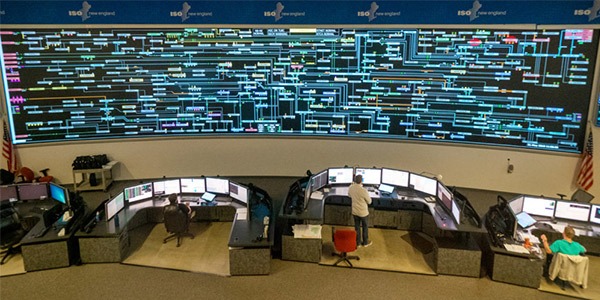ISO-NE said last week that stakeholders’ proposed schedule for the Phase 1 reliability and market analyses in the Future Grid Initiative is “aggressive but achievable” if there are no delays or changes in assumptions or scenarios.
NEPOOL asked ISO-NE in late December to provide feedback on the stakeholder-developed framework document that outlines the modeling for the project, which is intended to predict the impact of states’ policies to reduce carbon emissions and electrify transportation and buildings.
Carissa Sedlacek, ISO-NE’s director of planning services, told a joint meeting of the NEPOOL Markets and Reliability committees Jan. 19 that the RTO has the software to perform all four of the Phase 1 studies in the framework document first brought before the committees in December: simulations of production costs and ancillary services, a resource adequacy screen and a probabilistic resource availability analysis. The RTO said, however, that it lacks the tools to conduct the three Phase 2 analyses — revenue sufficiency in the capacity market and transmission thermal and voltage impacts — recommending NEPOOL hire a consultant. (See New England ‘ Future Grid’ Study Takes Shape.)
Sedlacek said the RTO’s ability to produce a Phase 1 report by May 2022 as requested depends on the “final clarity” of the assumptions and the ability to supply necessary model input data in a “timely manner.”
ISO-NE plans to use staff from past annual economic studies for most of Phase 1 but said the work could delay completion of any additional economic studies requested this year. If ISO-NE is asked to conduct another economic study, the RTO said it would be performed after completing the 2020 economic study for National Grid, which has an expected finish date of June 1.
It said that the Future Grid’s study’s reference to “current state energy and environmental laws” should also mention current market rules and assume the laws and tariff rules in effect as of Dec. 31, 2020.
To aid in comparing study results, the RTO added that it “strongly” recommends using a single target year in studies rather than 2035 for some scenarios and 2040 for others.
ISO-NE said it expects to conduct the Phase 1 work concurrently with its evaluation of the potential pathways part of the Future Grid Initiative which will start next month. The pathways being considered are a Forward Clean Energy Market or Integrated Clean Capacity Market, an Energy Only Market, carbon pricing and alternative resource adequacy constructs. (See Report Outlines NEPOOL ‘Pathways’ to a Future Grid.)
Sedlacek said the RTO would continue to review Phase 1 of the framework to identify any needed clarifications, and it may take up to three months to fully develop and define all study inputs. For the February MC/RC meeting, the RTO will develop a detailed plan for conveying updates on the status of the Phase 1 analyses. It plans to report its progress on the work monthly at the Reliability Committee. Detailed presentations of both interim and final results could be held via additionally scheduled MC/RC meetings.
Schedule
Study assumptions for the first phase of the report are expected to be completed by March 1. The final production cost simulation is scheduled for September 2021 to March 2022, and the ancillary services simulation from September 2021 to January 2022. MARS analyses will occur between October 2021 and January 2022. Drafting of a final report is expected to begin in February 2022.
Dates have not been set for the revenue sufficiency analysis and system security analyses in Phase 2, but they will not start before September 2021.
ISO-NE said there is no model for studying the detailed, operational dispatch needs of the future system — with significant inverter-based resources, interaction between transmission and distribution systems, and evolving load profiles. The RTO is developing a model internally but says it will be a “time-intensive … multiyear effort.”


